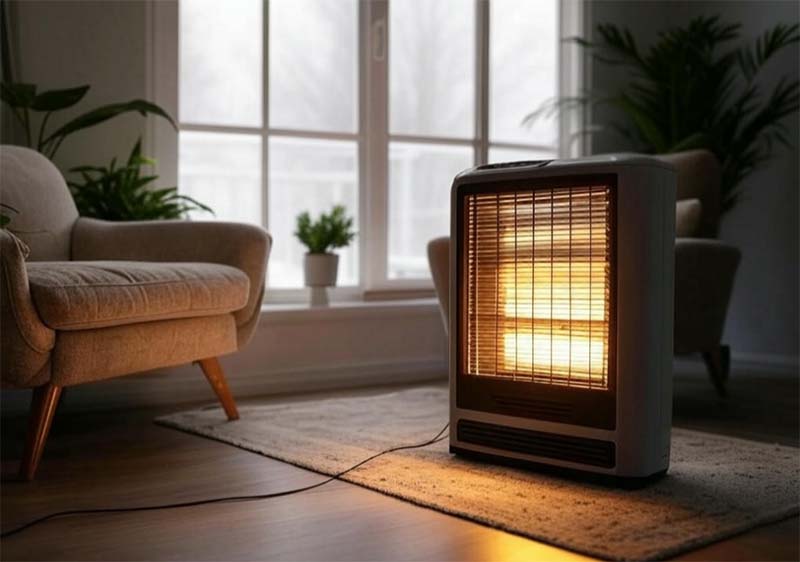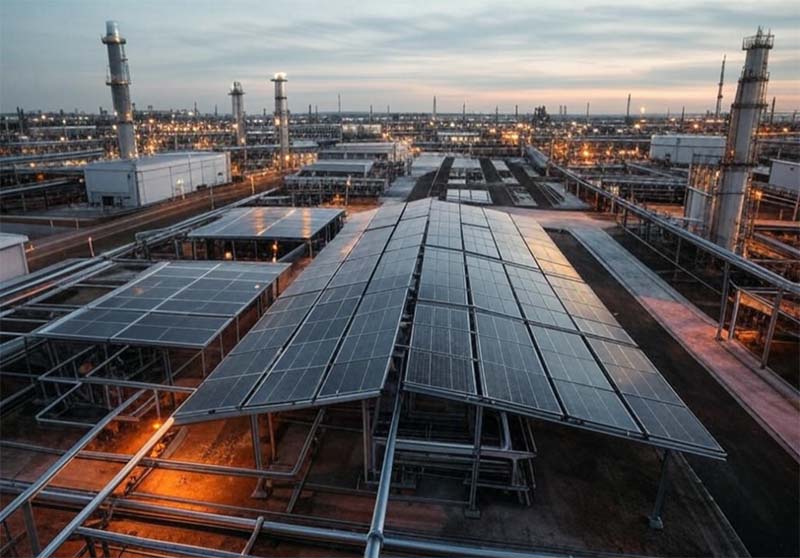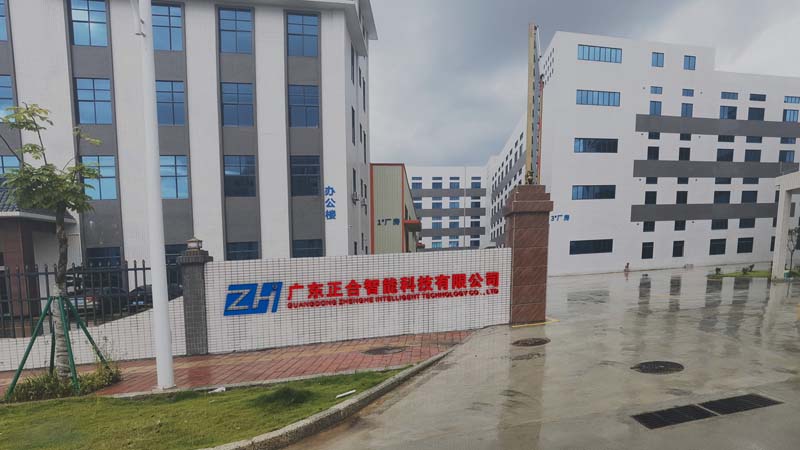In the Mid-to-Long Term, Efficient Electric Heating Systems Integrated with Renewable Energy Will Become Mainstream
Electric heating equipment has long permeated every aspect of our lives. From electric heaters warming homes in winter to heat tracing systems maintaining pipeline temperatures in industry, these technologies serve as invisible pillars of modern society, quietly supporting comfort and efficiency. However, as the global energy landscape undergoes dramatic shifts, traditional electric heating systems face unprecedented challenges: their high energy consumption and emissions clash with the demands of a carbon-neutral era. What lies ahead? The answer is becoming clear—in the mid-to-long term, efficient electric heating systems integrated with renewable energy will rise to prominence. This trend is not only inevitable but also a dual call from technology and the environment, heralding a green revolution in the electric heating industry and injecting new vitality into humanity’s sustainable future.
The Background of Integrating Electric Heating Systems with Renewable Energy
The core principle of electric heating systems is straightforward: converting electrical energy into heat through resistance or induction. Whether it’s a household heater or an industrial heating tube, this technology has remained largely unchanged for over a century. Yet, its Achilles’ heel is evident—when powered by fossil fuels, it is inefficient and emissions-heavy. Meanwhile, renewable energy sources like solar, wind, and geothermal are on the rise. Clean and inexhaustible, they come with the drawback of intermittency and fluctuation. The marriage of electric heating systems with renewable energy is a perfect synergy: the former needs a green power source, while the latter requires a stable load, making them complementary partners.

In China, for instance, the goals of carbon peaking and neutrality are driving a profound energy transition. By March 2025, renewable energy capacity accounts for a significant share of the nation’s total power generation, with policies accelerating clean heating and industrial decarbonization. This provides fertile ground for the green evolution of electric heating systems and establishes a solid foundation for their deep integration with renewable energy.
Technical Principles and Advantages
First, renewable energy supplies power to electric heating systems. Take solar photovoltaics (PV) as an example: during the day, solar panels convert sunlight into electricity to directly drive heaters; at night or on cloudy days, stored energy from batteries ensures uninterrupted heating. Wind and geothermal power follow a similar logic, requiring only compatible transmission and conversion systems. Second, energy storage is a critical component. Lithium batteries or thermal storage tanks act like an “energy bank,” storing surplus power and releasing it during peak demand to avoid waste. Finally, smart control systems boost efficiency. Through the Internet of Things (IoT) and AI algorithms, electric heaters can monitor ambient temperature and power loads in real-time, automatically adjusting output for “on-demand heating.”
The advantages are striking. Energy savings and emissions reduction top the list: compared to coal-fired heating, carbon emissions drop to near zero. For a northern Chinese household, a traditional boiler might emit tons of CO2 annually, while a PV-powered heater slashes that to negligible levels. Flexibility is another strength, with systems scalable from home heaters to industrial processes. Most importantly, in the long run, users are insulated from electricity price volatility since renewable energy’s marginal cost is nearly zero. In simple terms, it’s like plugging your kettle into an eco-friendly power source—saving money while saving the planet.
Market Trends and Policy Support
Market data reinforces this trend’s potential. According to 2024 industry reports, the global electric heater market is worth billions of dollars, with steady compound annual growth rates (CAGR). Systems integrated with renewable energy are growing especially fast. For instance, the high-voltage electric heater market is projected to achieve a CAGR of 25.3% by 2030, driven largely by demand in new energy sectors like electric vehicle (EV) battery heating. In China, spurred by clean heating policies, the markets for electric heaters and heat tracing systems are expected to surpass $3.3 billion and $3.4 billion, respectively, by 2030.
Policy acts as a market compass. China’s 2023-2024 Clean Heating Plan explicitly supports the integration of electric heating with renewables, with subsidies rolled out in multiple provinces. The EU’s Green Deal similarly positions electric heating as a key technology for low-carbon transitions. These signals show governments paving the way for the industry. On the demand side, industrial pipeline insulation, residential winter heating, and EV thermal management are all clamoring for greener, more efficient electric heating solutions. In the mid-to-long term, this market is poised for a surge.
Real-World Applications
Practical examples lend weight to this trend. In a northern Chinese city, local authorities harnessed wind power to build a “wind + electric heating” system. In winter, turbines feed electricity into storage stations, which smart grids then distribute to residential heaters. This not only curbs coal pollution but also cuts heating costs, earning praise from residents as “warm and affordable.”

Industry offers compelling cases too. In a chemical park, solar panels power heat tracing systems to prevent pipeline freezing. Equipped with thermal storage tanks, the system stores excess heat during the day and releases it at night, boosting efficiency by nearly 30%. In the EV sector, high-voltage heaters are widely used for battery insulation. Tests by a leading automaker show that PV-driven heating can extend winter driving range by over 10%. These examples prove that renewable-integrated electric heating systems are taking root across diverse scenarios, with boundless potential.
Challenges and Solutions
No transformation is without hurdles. First, renewable energy’s instability—wind doesn’t always blow, and the sun doesn’t always shine—poses a challenge. Advances in energy storage offer a fix: by early 2025, new solid-state batteries and high-temperature storage materials have entered commercial use, with vastly improved capacity and longevity. Second, high upfront costs may deter smaller enterprises. Government subsidies and market mechanisms, like carbon credit revenues, can offset this burden. Finally, uneven technological maturity and lagging infrastructure in some regions require attention. Industry collaboration and standardization will be key, with leading firms driving technology sharing and norm-setting.
These obstacles are surmountable. Over time, technological iterations and economies of scale will lower barriers, clearing the path for widespread adoption.
Conclusion and Outlook
In the mid-to-long term, efficient electric heating systems integrated with renewable energy will become mainstream—a natural outcome of technological progress and a response to the era’s demands. This shift liberates electric heating from its reliance on traditional energy, endowing it with a green, intelligent new life. Looking ahead, breakthroughs in materials (like graphene heating elements), more efficient storage, and AI-driven controls will push performance to new heights. From homes to factories, cities to villages, this technology could soon be ubiquitous, a cornerstone of a low-carbon future. Readers are encouraged to watch this field closely, for it promises not just warmth, but a shared tomorrow.
Amid this wave, countless companies are riding the tide. Take Guangdong Zhenghe Intelligent Technology Co., Ltd., for example. Since its founding in 2020, it has built a 20,000-square-meter modern factory in Zijin County, Guangdong, with a 15,000-square-meter production base, emerging as a leader in China’s automated electric heating component sector. Its products reach markets in Turkey, the U.S., Japan, and beyond, embodying the high-quality essence of “Made in China.”

Zhenghe’s R&D team, led by seasoned experts, drives innovation in automation and smart manufacturing, keeping its solutions at the industry’s cutting edge. With a global vision and relentless pursuit, the company aims not just to meet today’s needs but to shape a smarter, more efficient industrial future through ongoing upgrades—a microcosm of the electric heating industry’s vibrant ascent.

